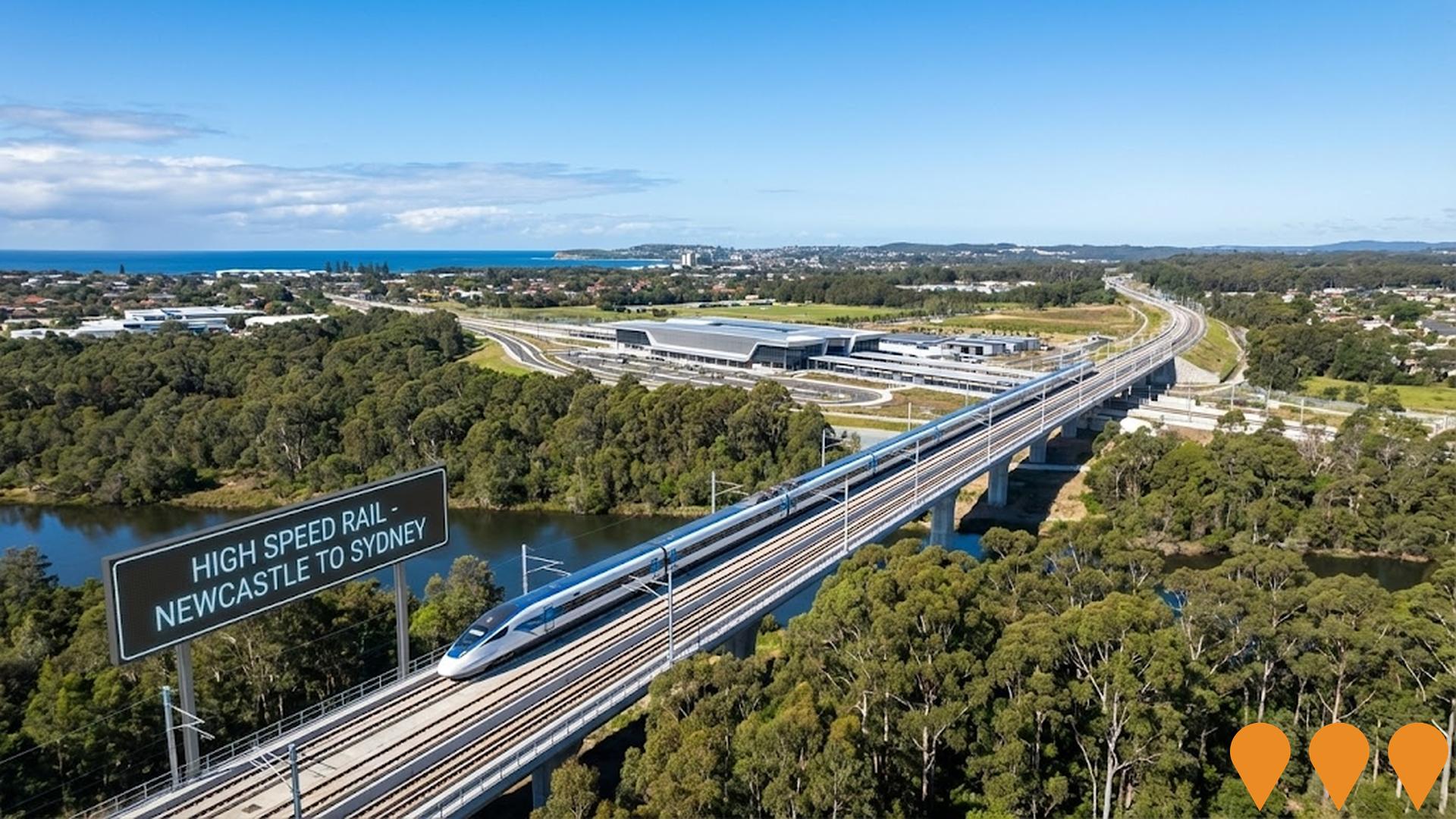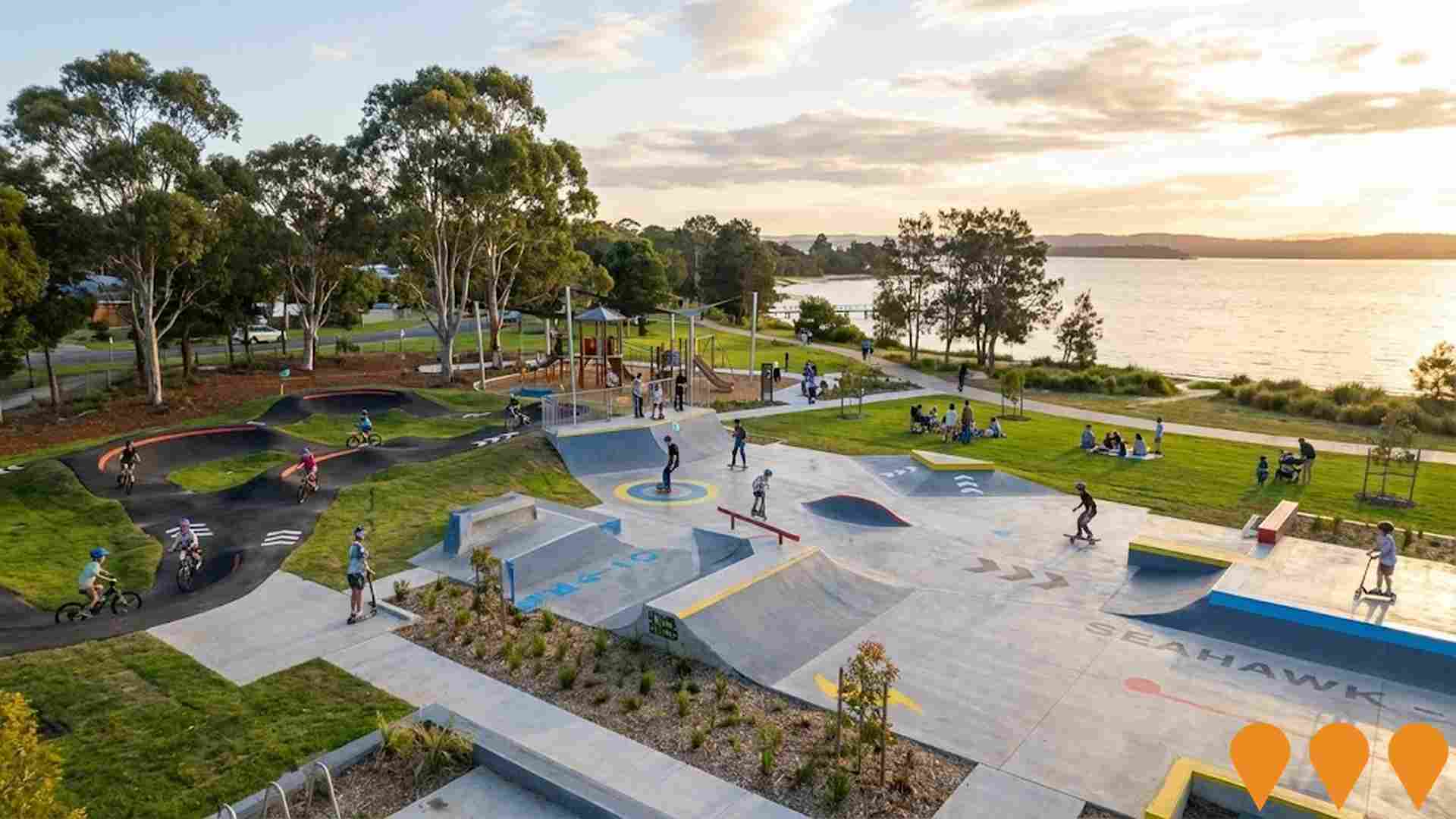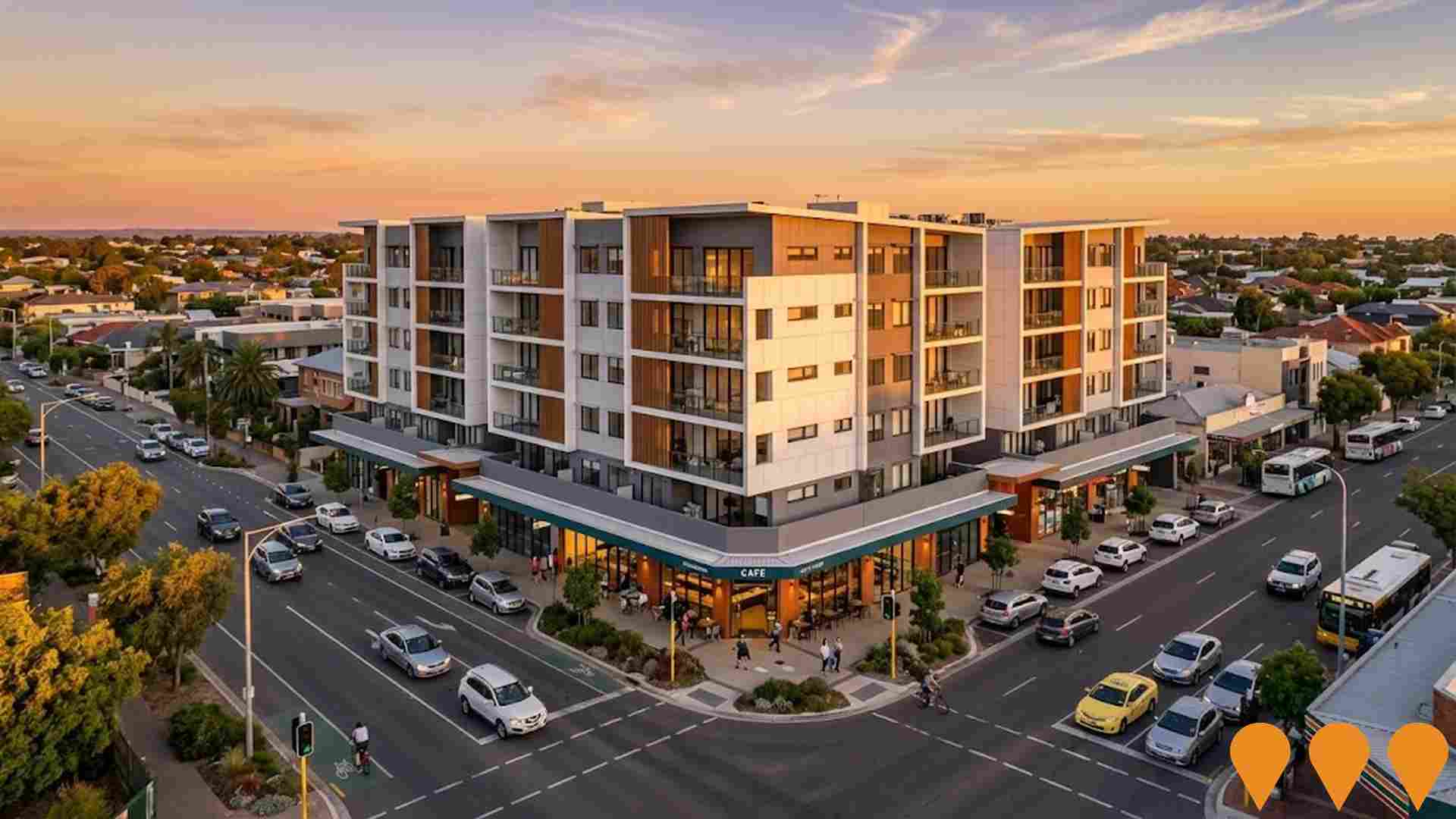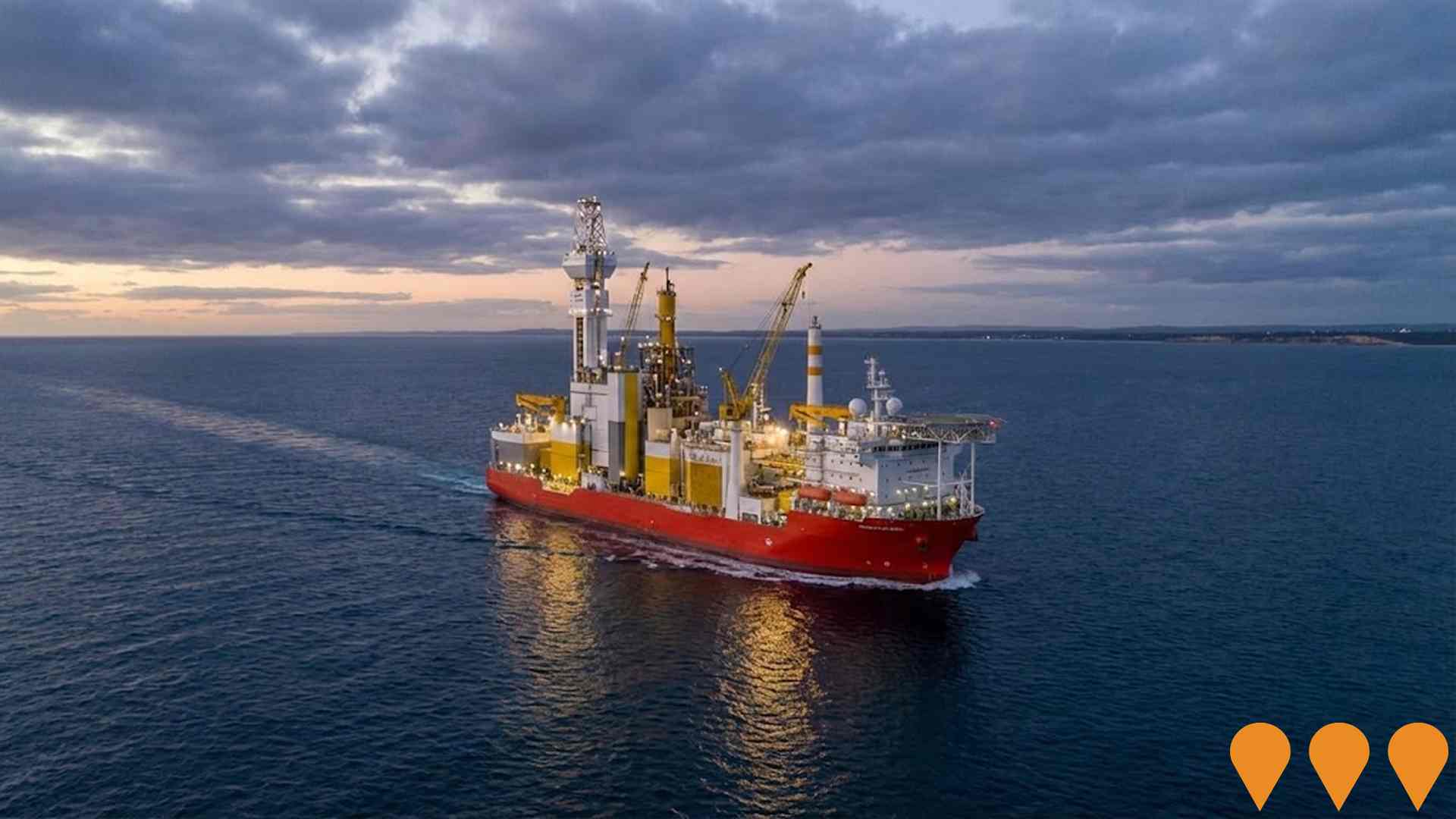Chart Color Schemes
est. as @ -- *
ABS ERP | -- people | --
2021 Census | -- people
Sales Activity
Curious about local property values? Filter the chart to assess the volume and appreciation (including resales) trends and regional comparisons, or scroll to the map below view this information at an individual property level.
Find a Recent Sale
Sales Detail
Population
An assessment of population growth drivers in Wangi Wangi - Rathmines reveals an overall ranking slightly below national averages considering recent, and medium term trends
Wangi Wangi - Rathmines' population is approximately 9,642 as of Aug 2025. This figure represents an increase of 175 people since the 2021 Census, which recorded a population of 9,467. The estimated resident population of 9,632 in June 2024 and 38 validated new addresses since the Census date suggest this growth. This results in a density ratio of 732 persons per square kilometer, comparable to averages seen across locations assessed by AreaSearch. Overseas migration contributed approximately 52.9% of overall population gains during recent periods, with all drivers including natural growth and interstate migration being positive factors.
AreaSearch adopts ABS/Geoscience Australia projections for each SA2 area, released in 2024 with a base year of 2022. For areas not covered by this data, AreaSearch uses NSW State Government's SA2 level projections, released in 2022 with a base year of 2021. Growth rates by age group from these aggregations are applied to all areas for years 2032 to 2041. Anticipating demographic trends, regional areas across the nation are expected to have lower quartile growth. Wangi Wangi - Rathmines is projected to expand by 69 persons to 2041, reflecting an increase of approximately 0.6% in total over the 17 years.
Frequently Asked Questions - Population
Development
Residential development activity is lower than average in Wangi Wangi - Rathmines according to AreaSearch's national comparison of local real estate markets
Wangi Wangi - Rathmines has seen approximately 24 new homes approved annually over the past five financial years, from FY-21 to FY-25. Specifically, 123 homes were approved during this period and an additional 8 have been approved so far in FY-26. Each dwelling built over these years has attracted an average of 2.4 new residents per year, indicating strong demand which is likely to support property values.
The average construction cost value of new homes being built is $679,000, suggesting that developers are targeting the premium market segment with higher-end properties. In terms of commercial development, $11.9 million in approvals have been registered this financial year. Compared to the Rest of NSW, Wangi Wangi - Rathmines has significantly less development activity, being 71.0% below the regional average per person. This scarcity of new homes typically strengthens demand and prices for existing properties. The area's residential building activity is predominantly standalone homes at 95.0%, with only 5.0% being medium or high-density housing.
This maintains the area's traditional low density character, appealing to those seeking space and family homes. The estimated population per dwelling approval in the area is 467 people. Population forecasts indicate that Wangi Wangi - Rathmines will gain approximately 59 residents by 2041. At current development rates, new housing supply should comfortably meet demand, providing good conditions for buyers and potentially supporting growth beyond current population projections.
Frequently Asked Questions - Development
Infrastructure
Wangi Wangi - Rathmines has strong levels of nearby infrastructure activity, ranking in the top 40% nationally
Changes to local infrastructure significantly impact an area's performance. AreaSearch identified seven projects likely affecting the region. Notable initiatives include Wangi Shores Retirement Village Stage 3B Block K, Wangi Power Station Redevelopment, Rathmines Park Transformation, and a three-storey apartment building at 1 Kent Place, Wangi Wangi with thirteen residences. The following list details those most relevant.
Professional plan users can use the search below to filter and access additional projects.
INFRASTRUCTURE SEARCH
 Denotes AI-based impression for illustrative purposes only, not to be taken as definitive under any circumstances. Please follow links and conduct other investigations from the project's source for actual imagery. Developers and project owners wishing us to use original imagery please Contact Us and we will do so.
Denotes AI-based impression for illustrative purposes only, not to be taken as definitive under any circumstances. Please follow links and conduct other investigations from the project's source for actual imagery. Developers and project owners wishing us to use original imagery please Contact Us and we will do so.
Frequently Asked Questions - Infrastructure
High Speed Rail - Newcastle to Sydney (Stage 1)
The first stage of the proposed National High Speed Rail network aims to connect Newcastle to Sydney via the Central Coast, reducing travel time to approximately one hour with trains reaching speeds up to 320 km/h. The project is focused on the development phase, which includes design refinement, securing planning approvals, and corridor preservation. It is being advanced by the Australian Government's High Speed Rail Authority (HSRA). Stations are planned for Broadmeadow, Lake Macquarie, Central Coast, and Central Sydney. The long-term vision is a national network connecting Brisbane, Sydney, Canberra, and Melbourne.

Swansea Channel Permanent Dredging Solution
A permanent dredging solution for Swansea Channel, the entrance to Lake Macquarie, involving a Beaver 30 dredge vessel and sand transfer system to maintain safe navigation for vessels, with sand pumped to Blacksmiths Beach. The project includes upgrades to the Blacksmiths boat ramp and aims to address ongoing sand accumulation issues.

Rathmines Park Transformation
Comprehensive redevelopment of Rathmines Park into a regional recreation destination. Features a $2+ million transformation including Lake Macquarie's biggest skate park, new pump track, youth activity areas, upgraded playground equipment, new playground, learn-to-ride area, youth hub, sports facilities, walking trails, and waterfront amenities. Enhanced connection to Lake Macquarie foreshore with improved accessibility and parking.

Newcastle 2040
City of Newcastle's Community Strategic Plan (CSP) setting the shared vision and priorities for the next 10+ years. Originally adopted in 2022 and revised in 2024/25, the updated CSP was endorsed by Council on 15 April 2025. It guides policies, strategies and actions across the LGA and is implemented through the Delivery Program and Operational Plan known as Delivering Newcastle 2040.

114-120 Cary Street Mixed Use Development
Five-storey twin towers mixed-use development featuring 108 residential units, commercial premises, and basement parking.

Newcastle Offshore Wind Project
The Newcastle Offshore Wind project proposes a floating wind farm off Newcastle, NSW, with an expected capacity of up to 10 gigawatts, pending a Scoping Study's results.

Wangi Shores Retirement Village - Stage 3B Block K
Stage 3B (Block K) at Wangi Shores Retirement Village is a new waterfront stage on Lake Macquarie, delivering eight over 55s villas (four upper and four lower) with two bedrooms, study, balconies and undercover parking, with residents enjoying access to the village pool, spa, community centre, gardens and other shared facilities; construction has commenced with completion expected in late 2026.

1 Kent Place, Wangi Wangi - 3 storey apartment building (13 residences)
A three storey residential building proposed at 1 Kent Place, Wangi Wangi in the Lake Macquarie City Council area. The project is planned to deliver 13 apartments above ground level parking, with 24 car spaces on a 933 square metre B1 Neighbourhood Centre corner site close to shops, services and the Wangi Wangi foreshore.

Employment
AreaSearch assessment positions Wangi Wangi - Rathmines ahead of most Australian regions for employment performance
Wangi Wangi - Rathmines has a skilled workforce with significant representation in essential services sectors. The unemployment rate was 2.7% as of June 2025, which is lower than the Rest of NSW's rate of 3.7%.
Employment growth over the past year was estimated at 1.9%. There were 4,710 residents employed with a workforce participation rate of 54.1%, slightly below the Rest of NSW average of 56.4%. The dominant employment sectors among residents include health care & social assistance, construction, and education & training. Construction stands out with employment levels at 1.4 times the regional average.
Agriculture, forestry & fishing has limited presence with only 0.4% employment compared to the regional average of 5.3%. Employment opportunities locally appear limited based on Census data comparison between working population and resident population. Over a 12-month period ending June 2025, employment increased by 1.9%, labour force grew by 2.5%, resulting in an unemployment rise of 0.6 percentage points. In contrast, Rest of NSW saw employment contract by 0.1%, labour force grow by 0.3%, and unemployment rise by 0.4 percentage points. Jobs and Skills Australia's national employment forecasts from May 2025 indicate that national employment is projected to expand by 6.6% over five years and 13.7% over ten years. Applying these projections to Wangi Wangi - Rathmines' employment mix suggests potential local growth of approximately 6.5% over five years and 13.7% over ten years, though these are simple weighted extrapolations for illustrative purposes only and do not consider localised population projections.
Frequently Asked Questions - Employment
Income
Income levels sit below national averages according to AreaSearch assessment
Wangi Wangi - Rathmines had a median taxpayer income of $47,287 and an average income of $65,785 in the financial year 2022, according to postcode level ATO data aggregated by AreaSearch. This was slightly above the national average for that year. The Rest of NSW had a median income of $49,459 and an average income of $62,998 during the same period. Based on Wage Price Index growth of 12.61% since financial year 2022, estimated incomes for September 2025 would be approximately $53,250 (median) and $74,080 (average). The 2021 Census data shows household, family, and personal incomes in Wangi Wangi - Rathmines ranked modestly, between the 35th and 39th percentiles. Income distribution indicates that 30.4% of locals (2,931 people) fell into the $1,500 - $2,999 category, similar to the surrounding region where 29.9% occupied this bracket. After housing expenses, 85.3% of income remained for other expenditures. The area's SEIFA income ranking placed it in the 5th decile.
Frequently Asked Questions - Income
Housing
Wangi Wangi - Rathmines is characterized by a predominantly suburban housing profile, with above-average rates of outright home ownership
In Wangi Wangi - Rathmines, as per the latest Census evaluation, 93.3% of dwellings were houses with the remaining 6.7% comprising semi-detached homes, apartments, and other types. This is compared to Non-Metro NSW's 89.7% houses and 10.2% other dwellings. Home ownership in Wangi Wangi - Rathmines stood at 45.3%, with mortgaged dwellings at 37.9% and rented ones at 16.9%. The median monthly mortgage repayment was $1,888, lower than Non-Metro NSW's average of $1,900. The median weekly rent in the area was $370, compared to Non-Metro NSW's $380. Nationally, Wangi Wangi - Rathmines' mortgage repayments were higher at $1,888 than the Australian average of $1,863, while rents were lower at $370 compared to the national figure of $375.
Frequently Asked Questions - Housing
Household Composition
Wangi Wangi - Rathmines features high concentrations of family households, with a fairly typical median household size
Family households constitute 76.9% of all households, consisting of 27.4% couples with children, 37.6% couples without children, and 11.2% single parent families. Non-family households comprise the remaining 23.1%, with lone person households at 21.7% and group households making up 1.7% of the total. The median household size is 2.5 people, which aligns with the Rest of NSW average.
Frequently Asked Questions - Households
Local Schools & Education
Wangi Wangi - Rathmines shows below-average educational performance compared to national benchmarks, though pockets of achievement exist
The area's university qualification rate is 20.2%, significantly lower than the NSW average of 32.2%. Bachelor degrees are most common at 13.4%, followed by postgraduate qualifications (4.2%) and graduate diplomas (2.6%). Vocational credentials are prevalent, with 44.6% of residents aged 15+ holding such qualifications - advanced diplomas (12.2%) and certificates (32.4%). A total of 24.7% of the population is actively pursuing formal education, including 8.8% in primary, 6.7% in secondary, and 3.5% in tertiary education.
Wangi Wangi - Rathmines has 3 schools with a combined enrollment of 656 students, operating under typical Australian school conditions (ICSEA: 984) and offering balanced educational opportunities. All 3 schools focus on primary education, with secondary options available nearby. The area has 6.8 school places per 100 residents, below the regional average of 12.3, indicating some students may attend schools in adjacent areas.
Frequently Asked Questions - Education
Schools Detail
Nearby Services & Amenities
Transport
Transport servicing is low compared to other areas nationally based on assessment of service frequency, route connectivity and accessibility
Analysis of Wangi Wangi - Rathmines public transport shows 100 active stops in operation. These are served by buses only. There are 35 individual routes, offering a total of 309 weekly passenger trips.
Residents have excellent accessibility to transport, with an average distance of 182 meters to the nearest stop. On average, there are 44 trips per day across all routes, equating to approximately three weekly trips per stop.
Frequently Asked Questions - Transport
Transport Stops Detail
Health
Health performance in Wangi Wangi - Rathmines is well below average with prevalence of common health conditions notable across both younger and older age cohorts
Wangi Wangi - Rathmines faces significant health challenges, with common conditions prevalent among both younger and older residents.
Private health cover stands at approximately 52%, or about 5,052 people, slightly higher than the average SA2 area's rate. Arthritis and mental health issues are the most common medical conditions in the area, affecting 11.7% and 9.1% of residents respectively. Around 60.6% of residents report no medical ailments, compared to 60.3% across Rest of NSW. The area has a higher proportion of residents aged 65 and over, at 27.6% (2,666 people), than the Rest of NSW's 21.9%.
Frequently Asked Questions - Health
Cultural Diversity
Wangi Wangi - Rathmines is considerably less culturally diverse than average when assessed alongside AreaSearch's national rankings for language and cultural background related metrics
Wangi Wangi-Rathmines showed lower cultural diversity, with 88.6% born in Australia, 92.7% being citizens, and 96.3% speaking English only at home. Christianity was the predominant religion, at 53.0%, compared to 54.0% regionally. Top ancestry groups were English (33.4%), Australian (30.1%), and Scottish (9.2%).
Notable differences included Welsh (0.9% vs regional 0.7%), Australian Aboriginal (3.5% vs 4.5%), and Dutch (1.4% vs 1.1%).
Frequently Asked Questions - Diversity
Age
Wangi Wangi - Rathmines hosts an older demographic, ranking in the top quartile nationwide
Wangi Wangi - Rathmines has a median age of 48 years, which is higher than Rest of NSW's median age of 43 and significantly older than Australia's median age of 38. The age profile shows that the 65-74 year-old group makes up 15.8% of the population, compared to the national average of 9.4%. Meanwhile, the 25-34 year-old group constitutes only 9.2%, which is smaller than the Rest of NSW figure. Post-2021 Census data indicates that the 75-84 age group has grown from 7.9% to 9.3% of the population, while the 55-64 year-old cohort has declined from 15.7% to 13.8%. By 2041, demographic modeling suggests that Wangi Wangi - Rathmines' age profile will change significantly. The 25-34 year-old group is projected to grow steadily, increasing by 202 people (23%) from 882 to 1,085. Conversely, population declines are expected for the 5-14 and 65-74 age groups.


